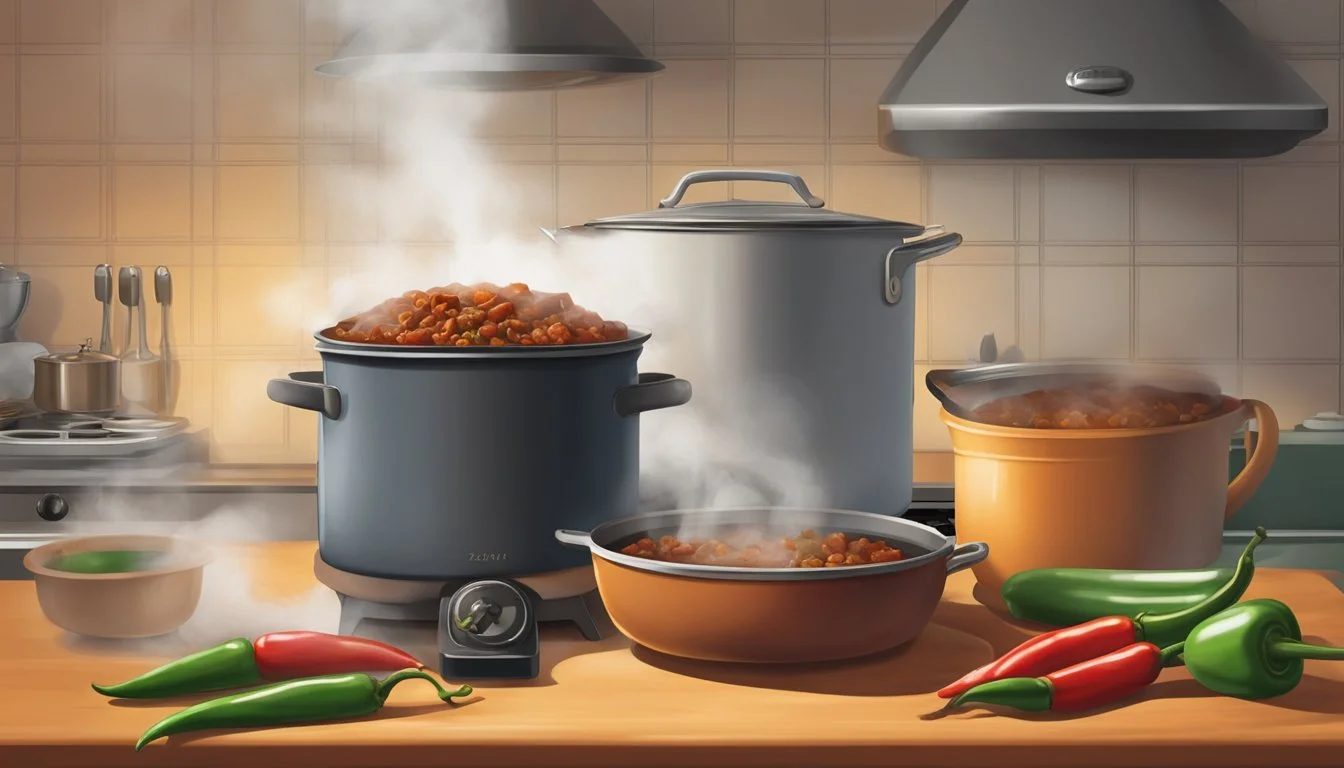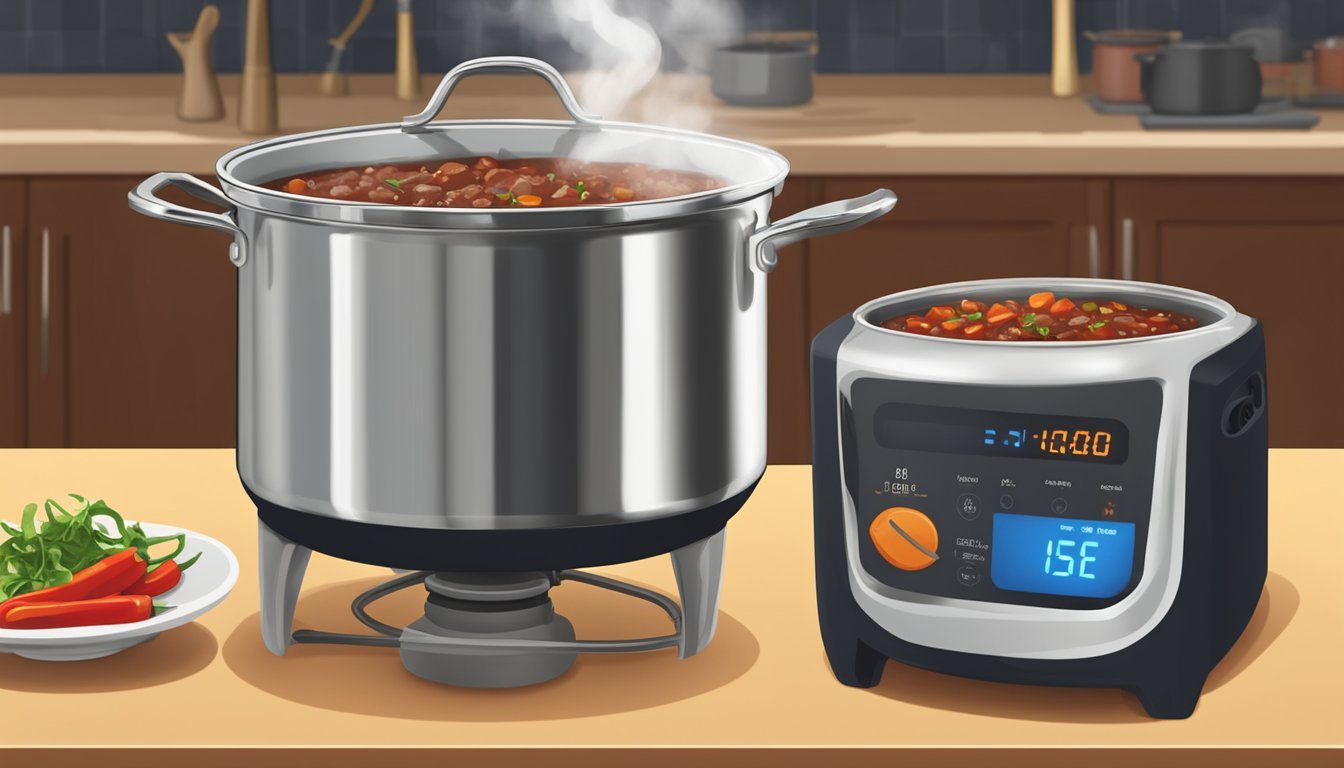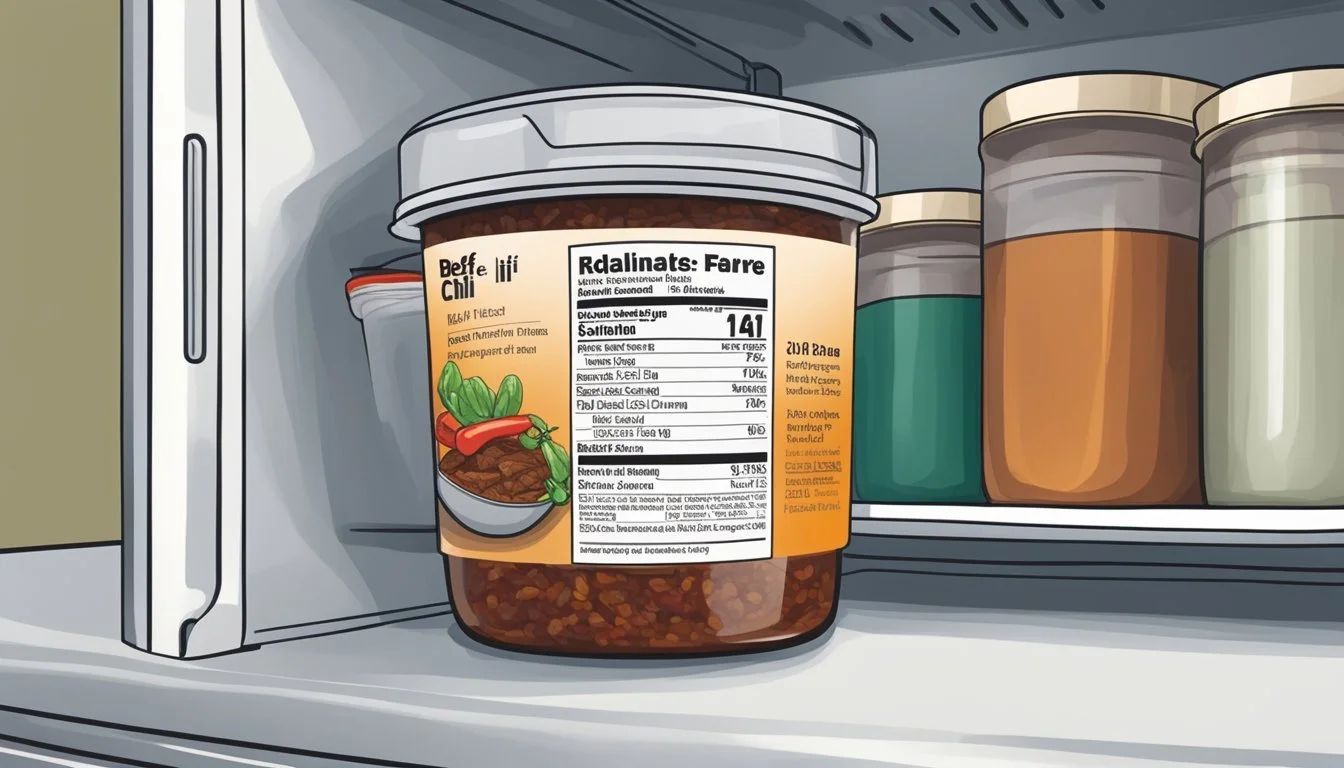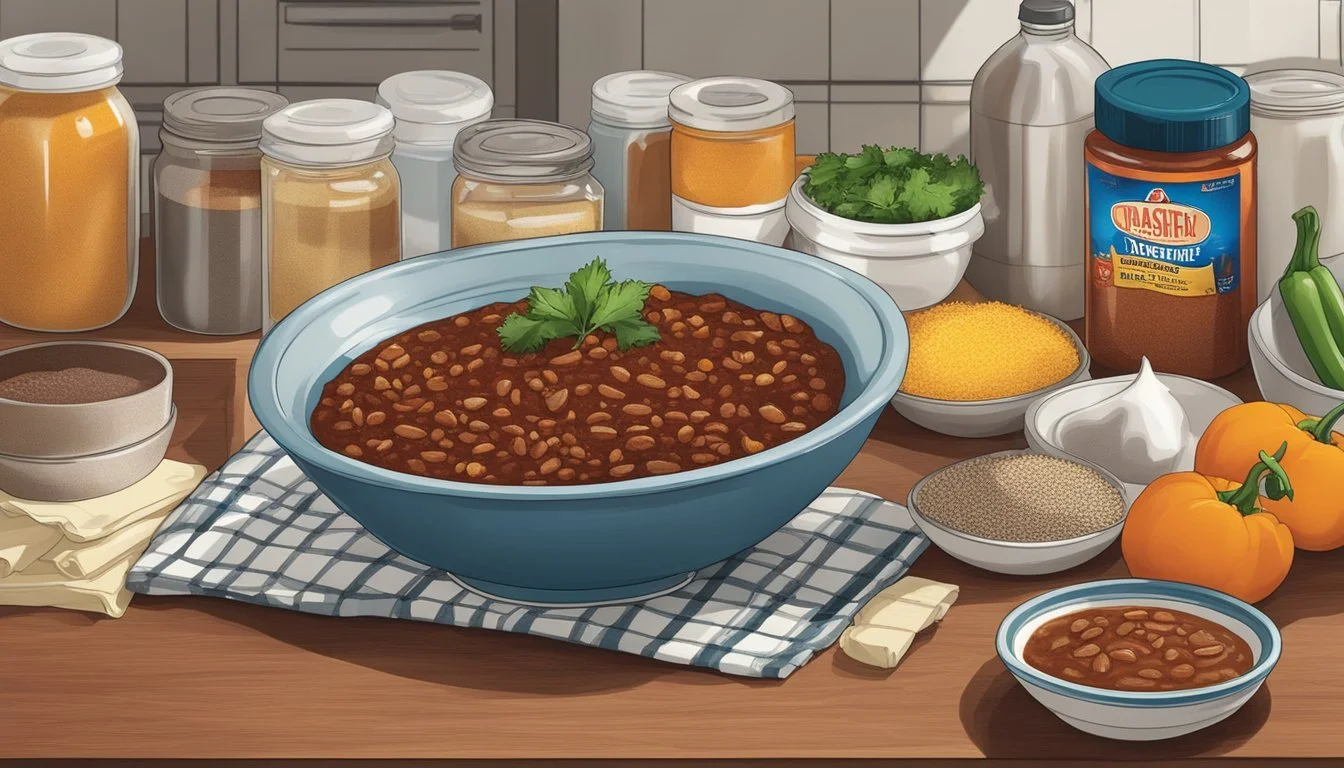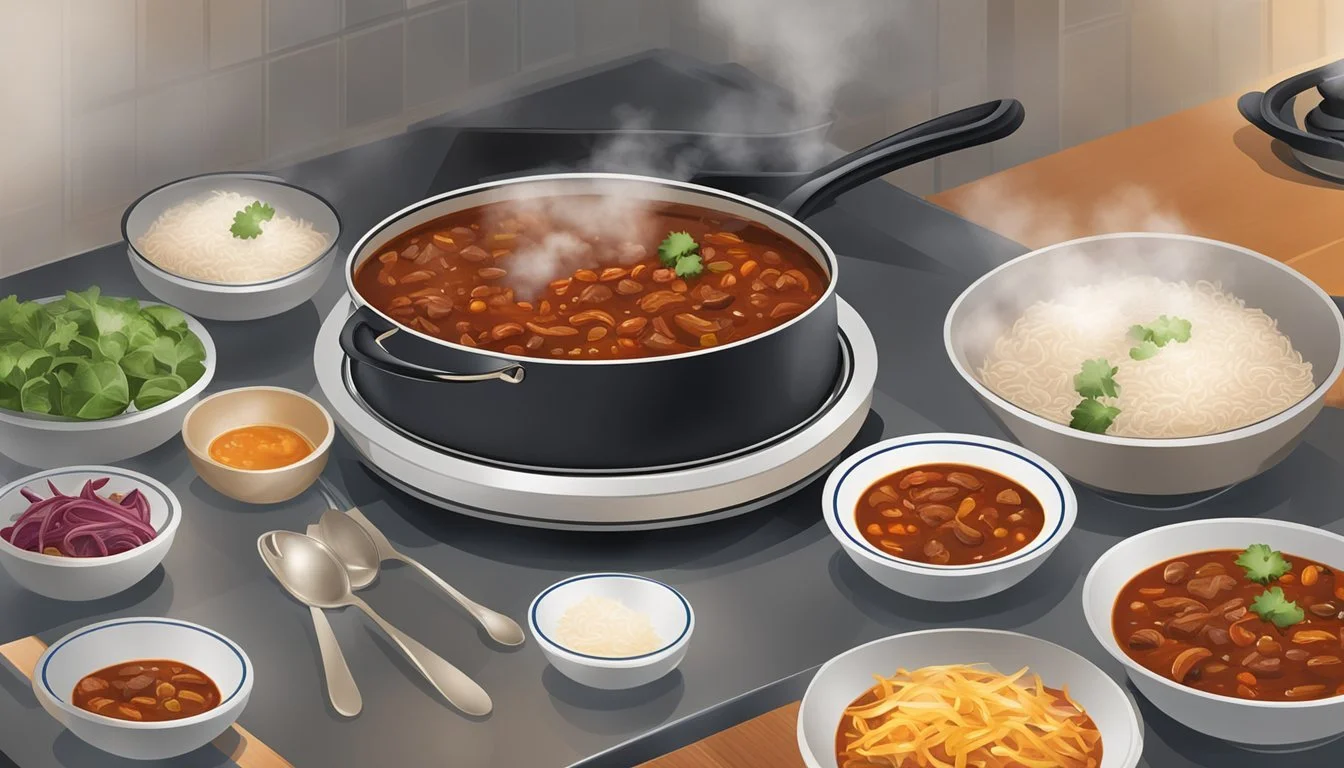How Long Does Beef Chili Last?
Storage Tips and Shelf Life Explained
When it comes to storing homemade beef chili, knowing how long it will last can make a significant difference in both flavor and safety. Properly refrigerated beef chili can last for 3-4 days without significant changes in texture or taste. This timeframe ensures that you enjoy your leftovers while they are still fresh and safe to consume.
It's crucial to store the chili in an airtight container at 40°F or below and to refrigerate it within two hours after cooking. This precaution minimizes the risk of bacterial growth, keeping your meal safe to eat. Additionally, letting the chili cool to room temperature before transferring it to the fridge can help maintain its quality.
Understanding the factors that affect chili's shelf life, such as ingredient types and storage methods, is essential. For instance, beef chili might spoil faster than vegetable-based chili due to the fat content in the meat. By following these guidelines, you can maximize the longevity and enjoyment of your homemade chili.
Understanding Chili Preservation
Properly preserving beef chili ensures that it remains safe to eat and retains its flavor. The longevity of chili depends significantly on its ingredients and storage temperature.
Role of Ingredients in Shelf Life
The shelf life of beef chili is influenced by the components used in its preparation. Key elements such as beef, beans, vegetables, and spices each play a part. Beef, being a perishable meat, tends to spoil faster than other ingredients. High-quality, fresh beef increases the dish's overall shelf life.
Beans and vegetables add nutritional value but also have varying spoilage rates. Fresh vegetables like tomatoes and peppers can impact the chili’s longevity, as they are prone to quicker spoilage. Using canned beans and vegetables may extend the shelf life.
Spices and vinegar contribute to flavor and act as mild preservatives. Vinegar's acidity can inhibit bacterial growth, slightly extending shelf life. However, the preservation impact of spices is limited compared to the meat and other main ingredients.
Impact of Storage Temperature on Beef Chili
Storage temperature is crucial in determining how long beef chili can last. Immediate refrigeration slows bacterial growth. Beef chili should be cooled to room temperature and stored in airtight containers within two hours of cooking.
In the refrigerator, chili can last for 3-4 days. Maintaining a consistent cold temperature of below 40°F (4°C) is essential to avoid bacterial growth. Dividing large batches into smaller portions can help cool it more efficiently.
Freezing beef chili extends its shelf life significantly. When frozen at 0°F (-18°C), it can last up to 6 months. Ensuring minimal air exposure through proper packaging in freezer-safe containers or vacuum-sealed bags prevents freezer burn and preserves the quality.
Reheating the chili to an internal temperature of 165°F (74°C) before consumption ensures safety and flavor retention.
Proper Storage Practices
Proper storage of beef chili ensures it remains fresh and safe to eat. Below, you will find clear guidelines on refrigeration, freezing methods, and the importance of airtight containers.
Refrigeration Guidelines for Fresh Chili
Beef chili should be refrigerated immediately after cooling to room temperature, ideally within two hours of cooking. Store it in an airtight container to prevent contamination and maintain quality. The ideal temperature for refrigerating chili is at or below 40°F (4°C). When stored properly, beef chili remains safe to consume for 3-4 days.
Quickly reducing the chili's temperature hinders bacterial growth. Place the chili in small, shallow containers for quicker cooling before refrigerating. Label each container with the date of storage to monitor freshness.
Freezing and Thawing Methods
For longer storage, freezing beef chili is an effective option. Use freezer-safe containers or heavy-duty resealable bags to prevent freezer burn. Cool the chili to room temperature before freezing. Lay bags flat in the freezer to save space and speed up the freezing process.
Beef chili can be frozen for up to 4-6 months while maintaining good quality. To thaw, transfer the chili to the refrigerator and allow it to defrost slowly overnight. If time is short, use the microwave's defrost function or place the sealed bag in cold water. Once thawed, reheat the chili to a temperature of at least 165°F (74°C) to ensure safety.
Airtight Containers and Their Significance
Using airtight containers is crucial for preserving the freshness and safety of beef chili. Airtight containers prevent exposure to air and contaminants, reducing the risk of spoilage and bacterial growth. Glass or plastic containers with tight-fitting lids are suitable options.
For freezer storage, choose containers labeled as freezer-safe to avoid cracking or damage at low temperatures. Vacuum-sealing bags can also be used to extend shelf life by removing air from the packaging. Always ensure containers are clean and dry before use to prevent any contamination.
Proper sealing and storage conditions significantly contribute to the quality and safety of stored chili. Regularly inspect the containers for any signs of damage or leaks to keep the chili fresh.
Food Safety Considerations
Ensuring the safety and quality of beef chili involves recognizing signs of spoilage and following proper reheating methods. Adhering to these practices can help prevent foodborne illnesses and maintain the dish's optimal taste and texture.
Identifying Spoilage in Chili
Proper identification of spoiled chili is crucial to avoid foodborne illness. Look out for unusual odors, which can range from sour to rotten smells. This is often an indicator of bacterial growth.
Visual indicators such as discoloration or mold growth also signify spoilage. If the chili appears off-color or has fuzzy patches, it is no longer safe to eat. Texture changes can also be a sign; if the chili feels slimy or excessively watery, discard it.
When in doubt, it's essential to rely on the “when in doubt, throw it out” motto to prevent possible harm. Following these guidelines can help ensure that leftover chili remains safe to consume for up to 3-4 days when stored properly.
Tips for Safe Reheating
Table summarizing safe reheating tips:
Step Description Internal Temperature Heat chili to at least 165°F (74°C) to kill harmful bacteria. Stovetop Reheating Stir frequently to distribute heat evenly and prevent hot spots. Microwave Reheating Use a microwave-safe container, cover loosely, and stir periodically.
Avoid reheating multiple times; instead, reheat only the portion you plan to consume. This minimizes the risk of bacterial growth from repeated temperature changes.
Proper reheating ensures the chili is safe and maintains its quality. This practice lowers the risk of foodborne illnesses significantly.
Maximizing Chili's Lifespan
To maximize the lifespan and quality of beef chili, it's essential to follow specific storage practices and methods that extend both flavor and freshness.
Best Practices for Long-Term Storage
For long-term storage and maintaining best quality, beef chili should be refrigerated within two hours of cooking. It must be stored in an airtight container to prevent moisture loss and contamination. Using smaller containers can help chili cool faster and reduce the risk of food poisoning.
When freezing chili, divide it into portions and use heavy-duty freezer bags to prevent freezer burn. Label the containers with the expiration date, noting that frozen chili maintains peak quality for up to 4-6 months.
Extending Flavor and Quality Over Time
To keep beef chili tasting its best, monitor the refrigerator temperature, ensuring it stays at 40°F or below. Regularly check and reheat the chili to an internal temperature of 165°F before consuming to preserve flavor and safety.
Avoid overcooking during reheating, as this can degrade both quality and flavor. Incorporating robust seasoning profiles can help retain taste over time, even after freezing. Store chili in portions to maintain seasoning balance throughout the storage period.
Special Considerations for Different Types of Chili
When storing chili, the type—whether homemade or canned, meat-based or vegetarian—affects how it should be handled. Each type requires specific storage and reheating methods to maintain safety and flavor.
Handling Homemade versus Canned Chili
Homemade chili demands more careful handling due to the lack of preservatives. After cooking, it should cool to room temperature before refrigeration. Store it in an airtight container and consume within 3-4 days. Reheat thoroughly using a stovetop or microwave, ensuring even heat distribution.
Canned chili benefits from preservatives, giving it a longer shelf life unopened. Once opened, treat it like homemade chili. Refrigerate any leftovers in an airtight container, leaving some headspace for expansion. Reheat using a microwave or stovetop until steaming hot.
Storing Chili with Meat versus Vegetarian Chili
Chili con carne and other meat-based chilies require strict refrigeration due to the high risk of bacterial growth. Store them promptly after cooling and ensure they reach an internal temperature of at least 165°F when reheated.
Vegetarian chili, though generally less risky, still needs proper storage to prevent spoilage. Like meat-based versions, refrigerate quickly in airtight containers. Reheat leftovers thoroughly, using a stovetop or microwave, to ensure it reaches a safe temperature. Always discard any chili that develops an off smell or appearance.
Recognizing the Lifespan of Beef Chili
The shelf life of beef chili depends on how it is stored. Proper storage methods can significantly extend its freshness and safety.
Fridge Storage Timeline
Beef chili typically lasts 3-4 days in the fridge when stored properly. Ensuring the fridge is at or below 40°F (4°C) is crucial for maintaining food safety.
It's best to store beef chili in an airtight container to minimize exposure to air and contaminants. After cooking, it should be cooled to room temperature before placing it in the fridge to avoid raising the internal temperature of the refrigerator.
In some cases, chili may be safe for up to 7 days, but this is not generally recommended due to potential bacterial growth. It’s always better to err on the side of caution.
Freezer Storage Expectancy
When it comes to freezing, beef chili can maintain its quality for up to 6 months. The freezer should be set at 0°F (-18°C) or lower to keep the chili safe and preserve its flavor and texture.
Divide the chili into smaller portions before freezing. This helps in quicker freezing and thawing, maintaining better flavor and texture. Use airtight containers or heavy-duty freezer bags to prevent freezer burn.
Labeling containers with the date helps keep track of how long the chili has been stored. Keeping a first-in, first-out system can also ensure the oldest chili is used first.
Avoiding Common Mistakes in Chili Storage
Proper chili storage techniques are vital for maintaining freshness and preventing spoilage. By focusing on sealing methods and monitoring storage conditions, one can ensure the chili remains safe to eat and tastes as good as when it was first made.
Covering and Sealing Techniques
Using an airtight container is essential. An airtight container minimizes exposure to air, reducing the risk of bacteria growth and contamination. When placing chili in the fridge, ensure the container is sealed tightly to keep out moisture and external odors.
Transferring the chili to smaller portions can help it cool quickly and more evenly in the fridge. This practice also makes it easier to reheat only what is needed, reducing the risk of repeatedly heating and cooling, which can foster bacterial growth.
In addition to containers, plastic wrap can be used as an extra barrier. Place the wrap directly on the surface of the chili before sealing the container. This reduces air contact and helps retain moisture.
Monitoring Temperature and Environmental Factors
The storage temperature significantly affects chili’s durability. Keep the fridge at 40°F (4°C) or below to prevent bacteria from thriving. The danger zone for bacterial growth is between 40°F and 140°F (4°C to 60°C), so it’s essential to stay well below that.
Ensure the chili cools to room temperature before refrigeration. Placing hot chili directly in the fridge can raise the ambient temperature inside, posing risks to other stored foods. Rapid cooling techniques, like placing the chili in shallow containers, can accelerate the cooling process.
For long-term storage, freezing is a viable option. Transfer chili to a freezer-safe container, allowing some space for expansion, and store it in the freezer. Properly stored chili can last 4-6 months in the freezer. Always label containers with the storage date to keep track of freshness.
Suggested Additives to Prevent Spoilage
Adding certain ingredients to beef chili can help extend its shelf life and maintain its quality. Acids and seasonings play a crucial role in this process.
Impact of Acids and Seasonings on Preservation
Vinegar is a powerful preservative due to its acidity. It lowers the pH of the chili, creating an environment that inhibits bacterial growth. A small amount of vinegar can be added during cooking for this purpose.
Tomatoes, naturally acidic, further enhance the preservation effect. Their acidity helps to extend the chili's freshness, while also adding flavor. Canned tomatoes, which often come with citric acid, are especially effective.
Spices such as chili powder contain natural antioxidants and antimicrobial properties. Ingredients like cumin, garlic, and oregano not only enhance the taste but also help in preserving the chili by reducing the effect of spoilage-causing bacteria.
Using these ingredients strategically can improve both the longevity and flavor of beef chili.
Chili Storage FAQs
Storing beef chili properly is essential to maintaining its freshness and ensuring it is safe to eat. This section addresses common questions related to freezing, detecting freezer burn, and disposing of spoiled chili.
Can You Freeze Chili with Beans?
Yes, chili with beans can be frozen. To freeze, let the chili cool to room temperature first. Transfer it to an airtight container or heavy-duty freezer bags. Label with the date before freezing. For best quality, consume within 3 months.
When reheating, thaw the chili in the refrigerator overnight. Avoid refreezing previously frozen chili, as it can affect texture and taste. Freezing not only preserves flavor but also prevents spoilage.
How to Detect Freezer Burn on Stored Chili?
Freezer burn occurs when food is improperly stored, losing moisture and affecting quality. Signs of freezer burn include ice crystals, changes in color, and a tough or dry appearance. The taste might also be off.
To prevent freezer burn, ensure the chili is in an airtight container and check the freezer temperature regularly. Freezer burn is not harmful but may affect the overall enjoyment of the dish, so it's best to use proper storage methods.
Safe Disposal of Spoiled Beef Chili
Spoiled beef chili can pose health risks. To detect spoilage, check for off odors, color changes, or mold. If there is a sour or rancid smell, or if the chili appears slimy, it should be discarded immediately.
When discarding spoiled chili, avoid pouring it down the drain, which can cause plumbing issues. Instead, seal it in a plastic bag and dispose of it in a trash bin. Proper disposal ensures safety and prevents contamination in your home.
Conclusion
Beef chili can be safely stored in the refrigerator for 3-4 days. It's crucial to store the chili in an airtight container at a temperature of 40°F or below.
Before refrigerating, allow the chili to cool to room temperature. This prevents condensation, which can contribute to spoilage.
For longer storage, freezing beef chili is an excellent option. Properly stored in an airtight container, chili can last in the freezer for up to six months. Labeling containers with the date helps track storage time.
When ready to consume frozen chili, make sure it’s thawed in the refrigerator before reheating. This ensures even heating and preserves texture and flavor.
To maintain the best quality, avoid leaving beef chili at room temperature for more than two hours. This helps prevent bacterial growth.
By following these guidelines, you can enjoy beef chili at its best quality for the longest time.

